Tombe Cheonmachong (Daereungwon) (천마총(대릉원))
10.2Km 2025-06-16
9, Gyerim-ro, Gyeongju-si, Gyeongsangbuk-do
+82-54-750-8650
De grandes tombes anciennes des rois et de la noblesse de la dynastie Silla peuvent être visitées aux alentours de la ville de Gyeongju, notamment dans le parc Daereungwon. Vous trouverez dans ce lieu vingt-trois grandes tombes ainsi que les tombes anciennes les plus fameuses du pays, dont la tombe Cheonmachong et la tombe Hwangnamdaechong. Lors des fouilles pratiquées dans cette région durant les années 1970, la tombe Cheonmachong a été découverte avec une peinture d’une selle de cheval d’où son nom ('ma' signifie cheval en coréen). Cette peinture est la seule de la dynastie Silla à avoir été découverte. Vous pouvez également entrer et visiter l’intérieur de la tombe Cheonmachong. On compte 11.526 reliques et couronnes du roi à l’intérieur de la tombe, montrant le style de vie luxueux du roi. La tombe Hwangnamdaechong est l'autre grande attraction touristique du lieu, il s'agit là de la plus grande tombe ancienne. Elle abrite les corps du roi et de la reine et plus de 30 milliers de reliques et de bijoux en or. Il est à noter également à propos de la tombe Hwangnamdaechong que la tombe de la reine possède le plus d'accessoires de luxe. De là, les chercheurs ont conclu que même la reine pouvait avoir une position sociale très élevée même avant de se marier. Lors de votre visite, vous pourrez faire la découverte de la culture ancienne de la Corée, une culture de plus de 1 500 ans.
Rue Ssam-bap de Gyeongju(경주 쌈밥거리)
10.3Km 2025-04-02
9, Gyerim-ro, Gyeongju, Gyeongsangbuk-do, Corée du Sud
La ville de Gyeongju, riche en patrimoine culturel brillant de Silla, peut être décrite comme un véritable site historique. C'est aussi une région célèbre pour sa gastronomie. Elle abrite de nombreux quartiers réputés, comme ceux de Hwangnam-bbang, de la soupe de récupération coréenne(haejangguk), du bulgogi et de la soupe de poisson épicée(maeuntang). En particulier, la zone autour de Daereungwon est renommée pour ses ruelles de ssam-bap. Le plat principal, le ssam-bap, est servi avec des accompagnements copieux, y compris du poisson savoureux et de la viande, ainsi qu'un jjigae de sauce de soja préparé avec du doenjang fait maison, et une sélection fraîche et variée de légumes à envelopper. Chaque restaurant propose une variété de menus, tels que des ssam-bap avec bulgogi grillé et du bulgogi de boeuf.
Gare de Gyeongju (경주역)
10.3Km 2021-03-17
266, Wonhwa-ro, Gyeongju-si, Gyeongsangbuk-do(Seongdong-dong)
Situé dans le quartier de Seongdong-dong à Gyeongju-si, (province du Gyeongsangbuk-do), la gare de Gyeongju a ouvert ses portes le 1er novembre 1918. La gare, partie intégrante de la ligne Donghae Nambu, est le dernier arrêt de la ligne Jungang.
Hwangnamguan [Korea Quality] / 주식회사 황남관 [한국관광 품질인증]
10.3Km 2023-04-13
1038, Poseok-ro, Gyeongju-si, Gyeongsangbuk-do
+82-10-3518-4582
Located in Gyeongju City, Hwangnamgwan is a traditional Korean style accommodation which opened in April 2014. The place looks like a small hanok village with 4 one-story buildings and 2 two-story buildings, constructed on about 5000㎡ of building site. The buildings are equipped with modern convenience facilities but manage to preserve the antique flavor of traditional Korean house. All rooms are equipped with a bathroom. A bathtub is installed in the largest room, Numaru Suite. Auxiliary facilities include the seminar room which is located in the two-story building. There are a cafe and a pizza restaurant on the first floor for meetings or simple meals. Guests are given discount coupons for the cafe.
Various traditional plays can be enjoyed in the hanok. It is possible to take photos with the beautiful Hwangnamgwan building in the background wearing traditional Korean clothes. You can also play Neolttwigi, Tuho, and Jegichagi in the wide yard and experience twisting legs, bastinado, turning the millstone, fulling, Pogurak (dancing play), etc. which have appeared on TV dramas. It is possible to receive discounted services at nearby affiliated facilities: 50% discount at Spalux Jjimjilbang, Kids Cafe, and Sport Town Bowling Center. Famous tourist attractions such as Cheonmachong Tomb, Cheomseongdae Observatory, and Banwolseong Fortress are within walking distance; and the National Gyeongju Museum and Gyeongju World Culture Expo Park are likewise not far from Hwangnamgwan.
Country Club de Gyeongju
10.4Km 2015-02-16
San 375-1 Bukgun-dong Gyeongju-si Gyeongsangbuk-do
+82-54-745-2228
Le Country Club de Gyeongju est situé dans la région touristique de Bomun avec une vue spectaculaire sur le lac Bomun. Il se trouve à 15 minutes de Gyeongju et a pour but de devenir le meilleur parcours de golf de Corée. La caractéristique du Country Club de Gyeongju est le « Golf Eclairé » qui permet aux joueurs de pratiquer la nuit et à l’aube sous un éclairage parfait. Il est situé à Gyeongju, qui est une ville touristique, attirant alors l’attention des touristes qui aiment le golf.
Pyeongyang Naengmyeon (평양냉면)
10.4Km 2017-01-19
109-2, Wonhyo-ro, Gyeongju-si, Gyeongsangbuk-do
+82-54-772-2448
The restaurant of Pyeongyang Naengmyeon has been operated through two generations and thus is very famous in Gyeongju. Its noodles are hand-made from starch of Korea-grown buckwheat and potato and broth is made by deeply boiling beef bones. So, noodles are chewy and broth tastes rich and clean.
ALLEY HOSTEL & GUESTHOUSE [Korea Quality] / 앨리게스트하우스 [한국관광 품질인증/Korea Quality]
10.4Km 2021-03-29
12, Gyerim-ro 106beon-gil, Gyeongju-si, Gyeongsangbuk-do
ALLEY, a guesthouse located in the center of Gyeongju , is located only 3 min by foot from Gyeongju Station. Its supreme accessibility makes it a popular accommodation for backpackers in Gyeongju. There are no parking lots on the promise, but guests renting family rooms have access to parking services.
The first floor of the guesthouse has a lobby, common kitchen, luggage storage, and laundromat. The kitchen offers self-service complimentary breakfast. Visitors can make their own toasts and fried eggs to have with coffee and beverages. The second and third floors house guest rooms. The rooms available include single-occupancy rooms, double-occupancy rooms with single beds, double-occupancy rooms with bunk beds, triple-occupancy rooms with bunk beds, 4-person family rooms with bunk beds, and 4-person dormitory rooms with bunk beds. The family room supports up to five guests. All rooms are equipped with air conditioning and door locks, and have restrooms with shower facilities. Amenities include towels, soap, shampoo, hair conditioner, toothpaste, and hair dryer. Guests also have access to the third floor’s open-air terrace, and may store their luggage there even before their check-in. Daereungwon Ancient Tomb Complex lies about 10 min from the guesthouse, while Cheomseongdae Observatory and Donggung Palace and Wolji Pond can be found 20 min away.
Gyeongju Soohojeong [Korea Quality] / 경주수호정 [한국관광 품질인증]
10.4Km 2020-09-08
15-15, Poseok-ro 1068beon-gil, Gyeongju-si, Gyeongsangbuk-do
+82-10-2379-7248
Gyeongju Suhojeong, located in front of the Gyeongju Daereungwon, is a Hanok guesthouse in a ㄱ shape. The traditional house was built in 2015 in accordance with traditional architecture using natural materials such as pine tree, red clay, straw, and others; thus, it is cool in summer and warm in winter. Planted along the wall next to the door are Korean hornbeams, top trees, maple trees, and elm trees. The climbing roses on the wall bloom in May and offer a great sight. The spacious yard with a stone table is a great place to chat with fellow guests. There are seven rooms in total and a cafeteria which doubles as a lounge. Each room with a bathroom has modern facilities that suit traditional beauty. Gyeongju Station and Gyeongju Intercity Bus Terminal are only five minutes away on foot, making the trip to the guesthouse by public transport easy. Sitting right next to the Hwangridangil Street, the accommodation offers great access to popular restaurants and fashion places of Gyeongju, and to major tourist attractions such as Daereungwon, Cheomseongdae, Balwolseong, Anjapji, and Gyochon Village.
Tombeau Geumgwanchong (금관총)
10.5Km 2020-04-28
Noseo-dong, Gyeongju-si, Gyeongsangbuk-do
+82-54-779-6100
Geumgwanchon, situé à Noseo-dong (Gyeongju), est un tombeau de la Dynastie Shilla (-57 à 935 ap JC). Il s’agit de l’un des trois tombeaux du centre ville de Gyeongju appartenant au district Noseo-dong Tomb.
Le Tombeau Geumgwanchon est considéré comme le tombeau d’un roi avant ou après le règne du Roi Ji-Jeung, au début du 6ème siècle (500-514). L’on ne sait exactement à qui il appartient.
Il fut découvert en Septembre 1921, lorsque le fief fut passé au peigne fin après qu’un civil eut nivelé le sol afin d’élargir son terrain constructible. La première relique trouvée dans ce tombeau fut une couronne en or (« Geumgwan », ayant donné son nom au tombeau). Des ornements tels que des ceintures en or, des boucles d’oreille, des bracelets, des selliers ainsi que des vaisselles datant de l’époque des Trois Royaumes (lorsque Goguryeo, Baekje et Silla étaient séparés -réunifiés plus tard par Silla en 676-) furent désensevelis. Il y avait de très nombreuses reliques, dont certaines garnies de perles représentant à elles seules un total de plus de 30 000.
La structure originelle de Geumgwanchong était de 13m de haut et de 50m de diamètre. Les reliques du tombeau furent déplacées et sont désormais conservées par le Musée National de Gyeongju.
Dayu (다유)
10.5Km 2019-08-01
84-5, Moksil-gil, Cheonbuk-myeon, Gyeongju-si, Gyeongsangbuk-do
+82-54-773-8866
Located in Mulcheon-ri, Gyeongju-si, Dayu offers a comfortable resting place for visitors who need to rest and recharge during their trip. The restaurant serves nutritious meals for vegetarians and traditional teas.
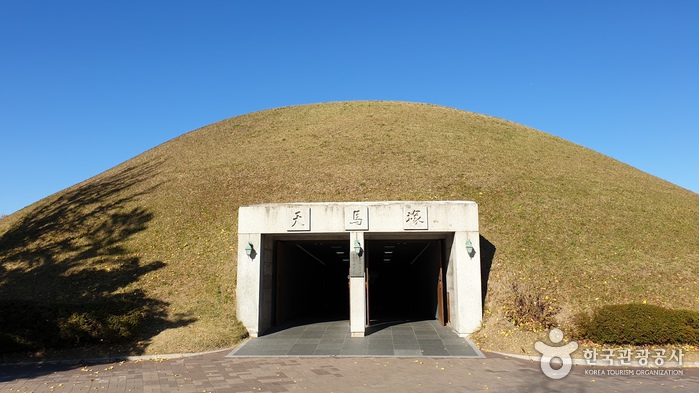
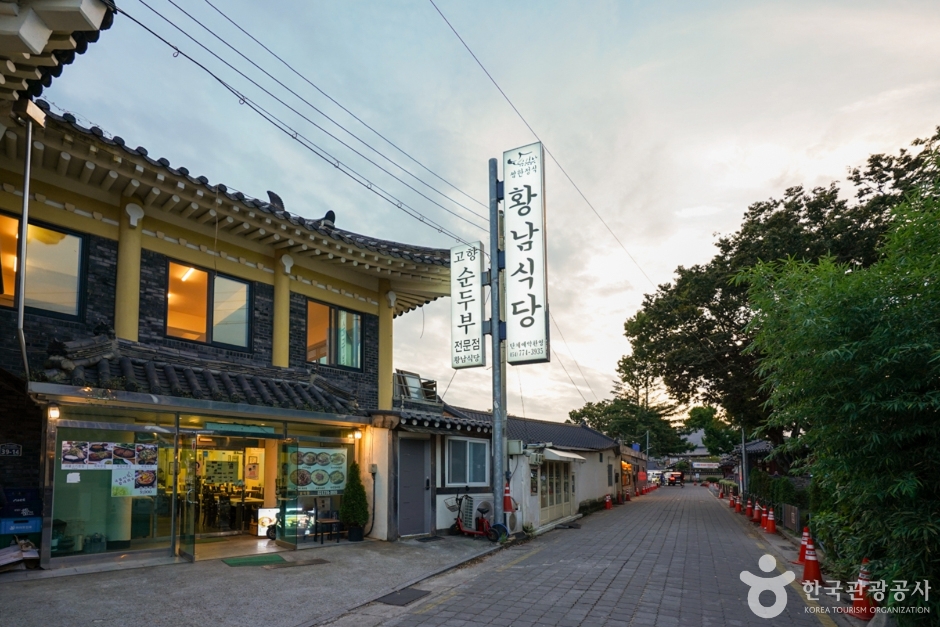
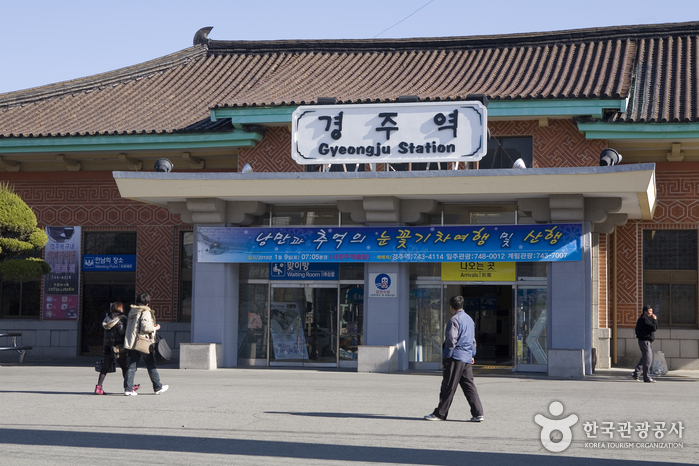
![Hwangnamguan [Korea Quality] / 주식회사 황남관 [한국관광 품질인증]](http://tong.visitkorea.or.kr/cms/resource/06/2635706_image2_1.jpg)

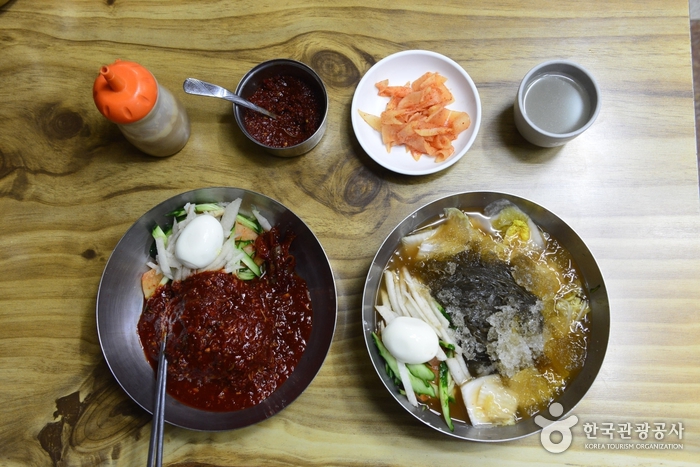
![ALLEY HOSTEL & GUESTHOUSE [Korea Quality] / 앨리게스트하우스 [한국관광 품질인증/Korea Quality]](http://tong.visitkorea.or.kr/cms/resource/80/2707780_image2_1.jpg)
![Gyeongju Soohojeong [Korea Quality] / 경주수호정 [한국관광 품질인증]](http://tong.visitkorea.or.kr/cms/resource/11/2635611_image2_1.jpg)
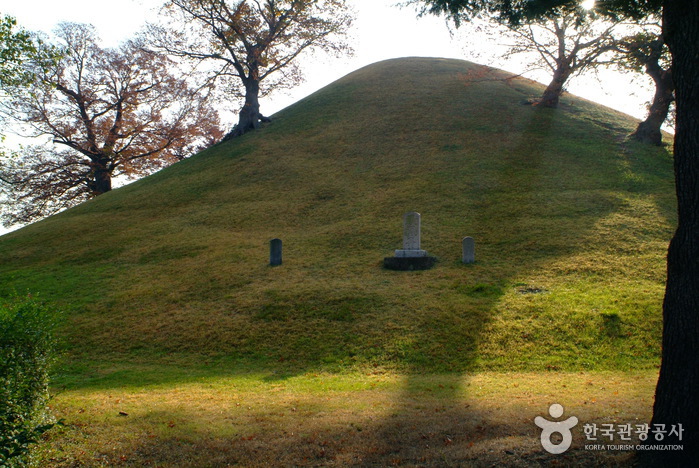
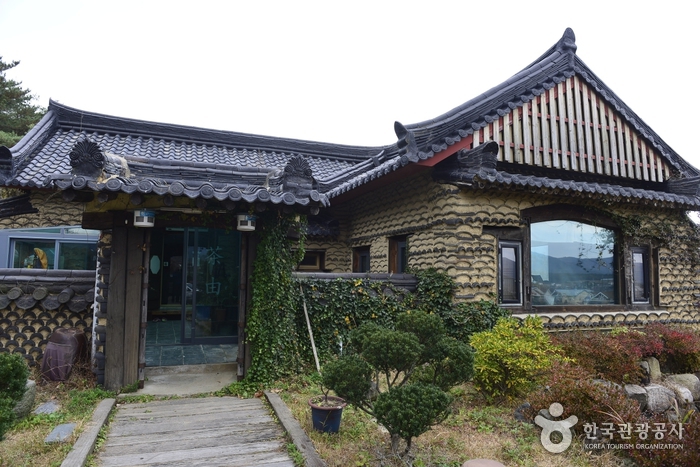
 Français
Français
 한국어
한국어 English
English 日本語
日本語 中文(简体)
中文(简体) Deutsch
Deutsch Español
Español Русский
Русский